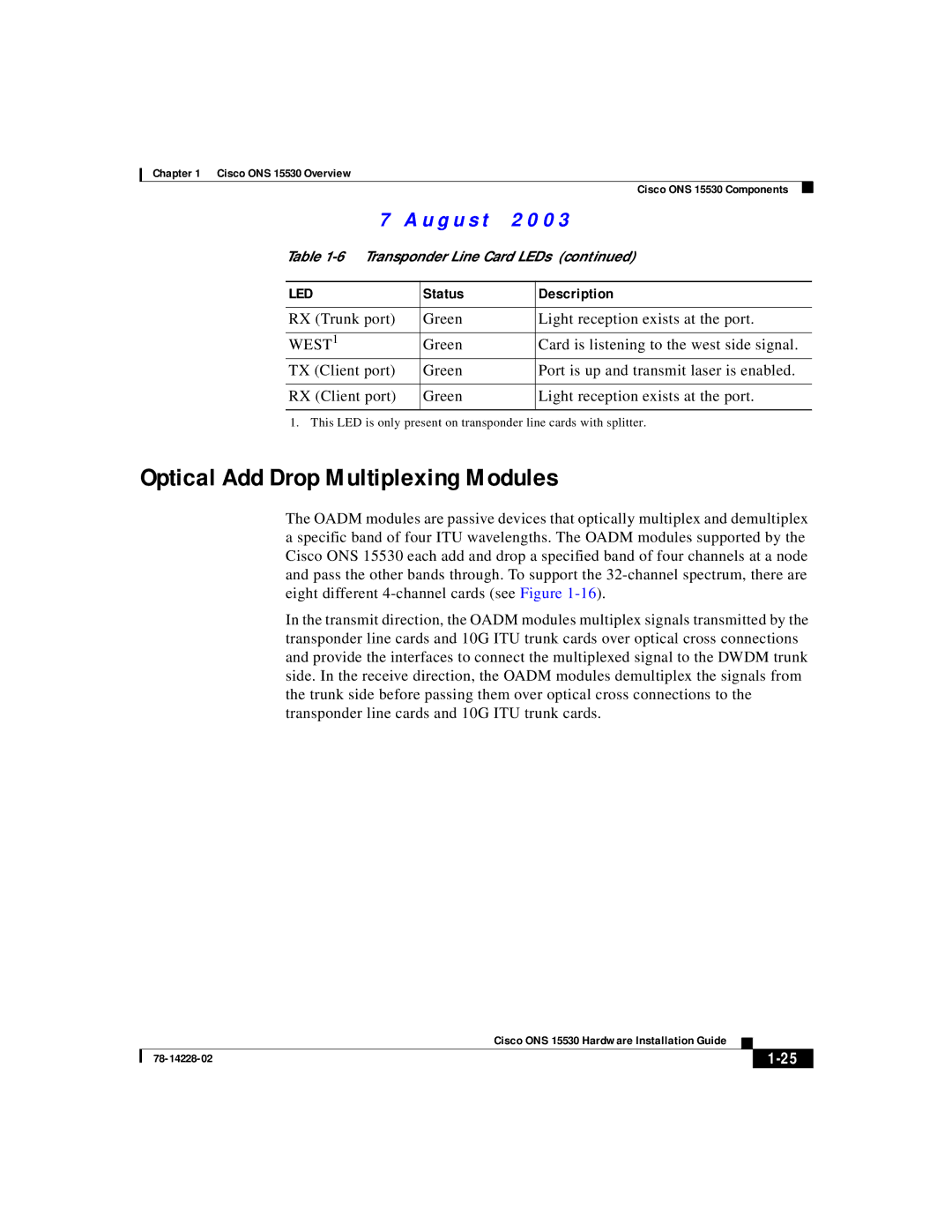ONS 15530 specifications
Cisco Systems ONS 15530 is a versatile optical networking solution designed to meet the high-capacity demands of modern telecommunications networks. As part of Cisco's Optical Networking System (ONS), the 15530 provides a robust platform for delivering high-speed data transport and connectivity features crucial for service providers and enterprises.One of the main characteristics of the ONS 15530 is its ability to support dense wavelength division multiplexing (DWDM) technology. This capability enables multiple data streams to be sent over a single optical fiber, significantly increasing the bandwidth efficiency of the network. With the ONS 15530, carriers can maximize their existing fiber infrastructure, reducing capital expenditures while enhancing service offerings.
The ONS 15530 is also known for its scalability. The system can accommodate various speeds, supporting 10G, 40G, and even 100G services. This flexibility makes it an ideal choice for organizations that anticipate future growth or require adaptable solutions to match evolving business requirements. With automated bandwidth allocation features, operators can swiftly adjust capacity as needed, ensuring optimal performance.
The built-in software tools enhance operational efficiency, allowing network operators to monitor performance, manage traffic, and troubleshoot issues effectively. With proactive health checks and network diagnostics, the ONS 15530 enables businesses to maintain service quality while minimizing downtime. Additionally, its web-based management interface simplifies network administration, providing real-time visibility and analytics.
Cisco’s ONS 15530 is engineered for reliability and redundancy. It offers diverse path options and integrated protection mechanisms, buffering against fiber cuts and equipment failures. This reliability is essential for service providers that require uninterrupted service delivery to their customers.
Security features are also prominent in the ONS 15530. As cybersecurity threats escalate, the need for robust defenses at the optical layer has become critical. Cisco’s solution includes advanced encryption protocols to secure data in transit, giving customers peace of mind in an increasingly interconnected world.
In summary, Cisco Systems ONS 15530 stands out as an advanced optical networking platform that combines high-capacity transport, scalability, operational efficiency, reliability, and security. It is an excellent choice for service providers and enterprises looking to enhance their network capabilities and future-proof their investments in digital infrastructure.

